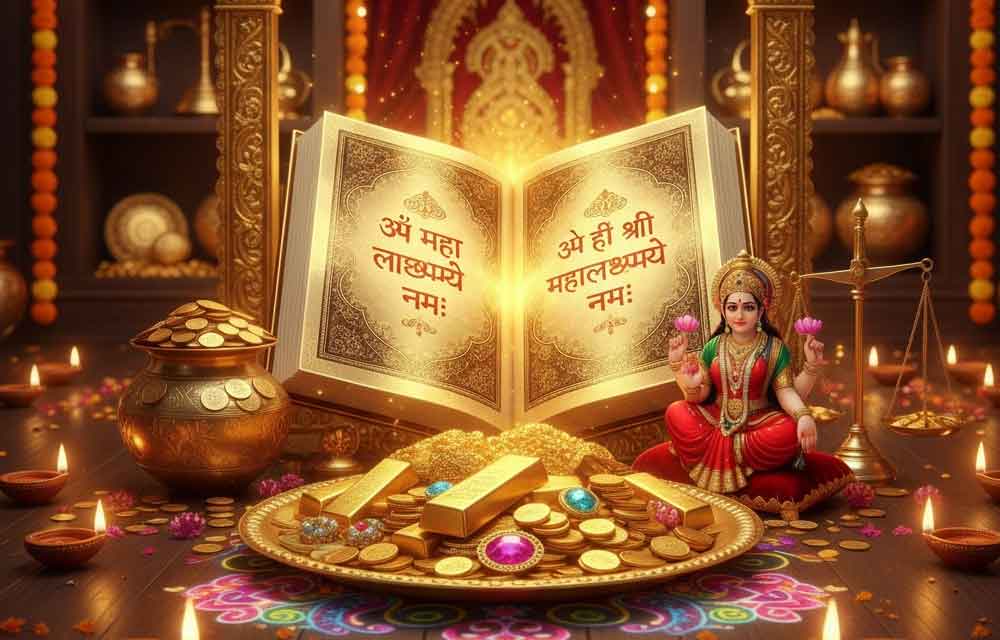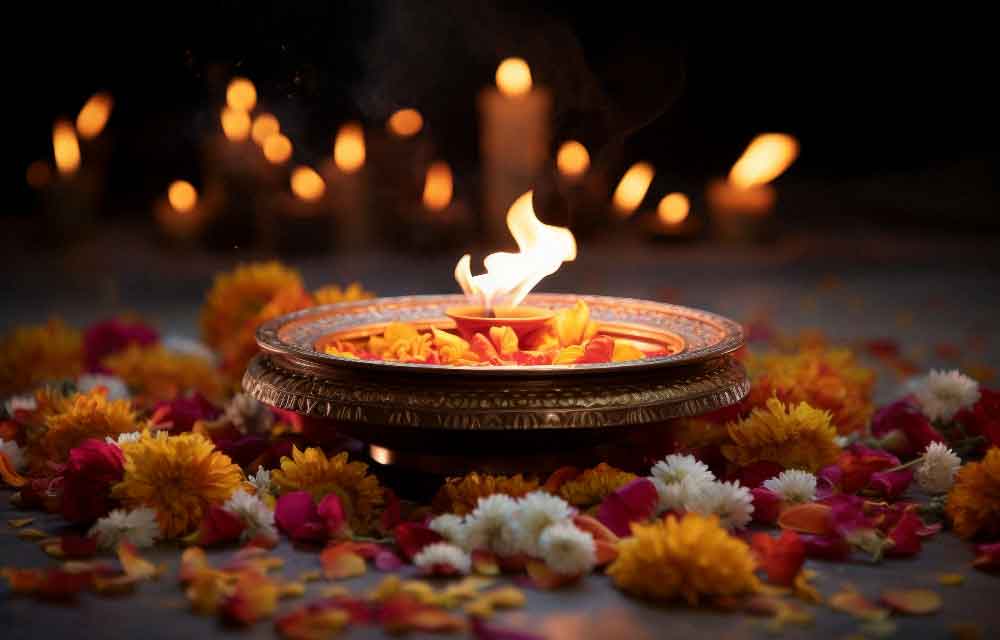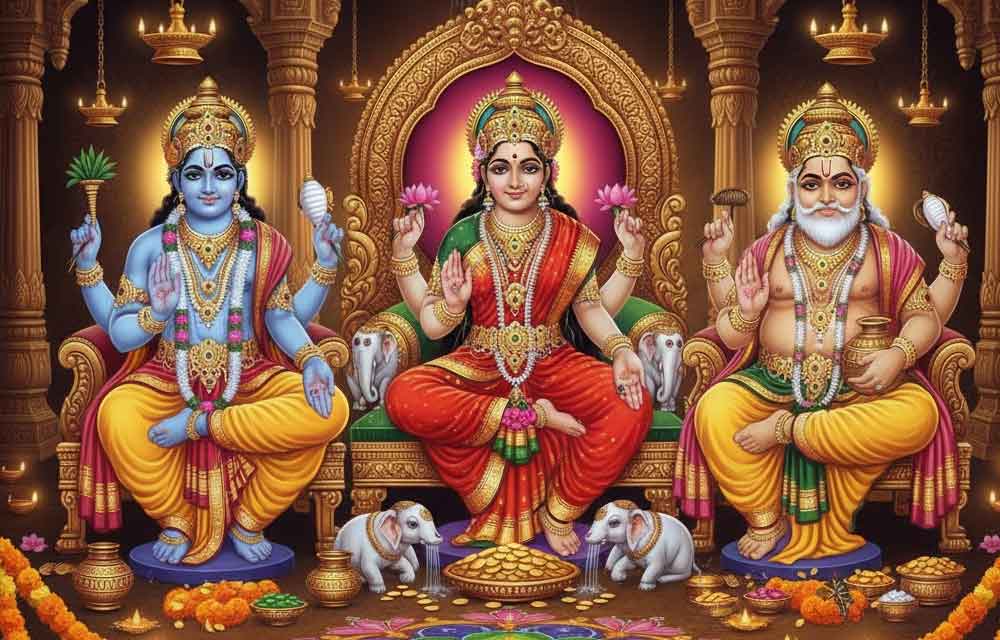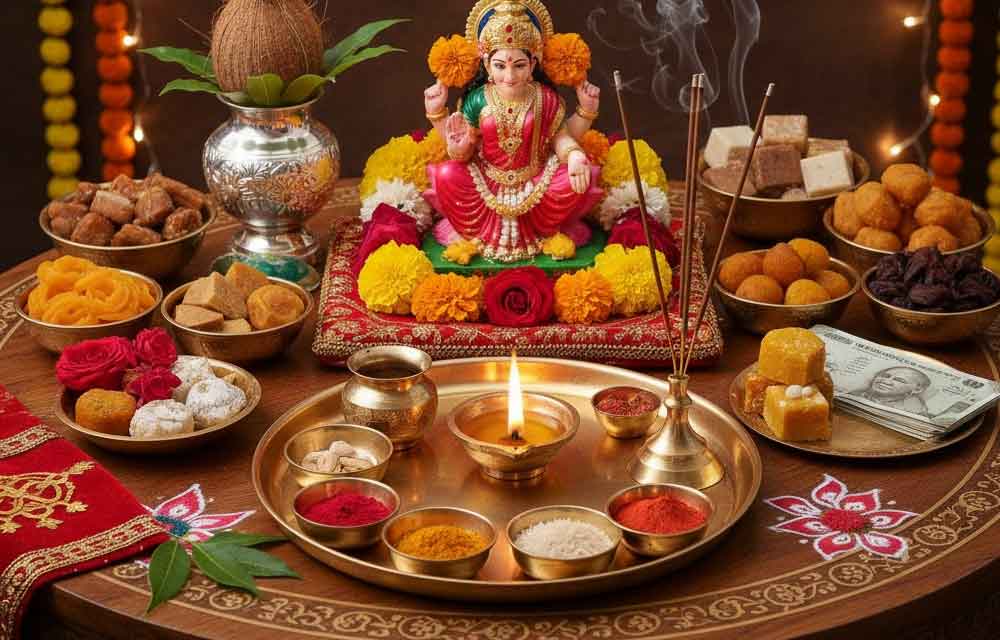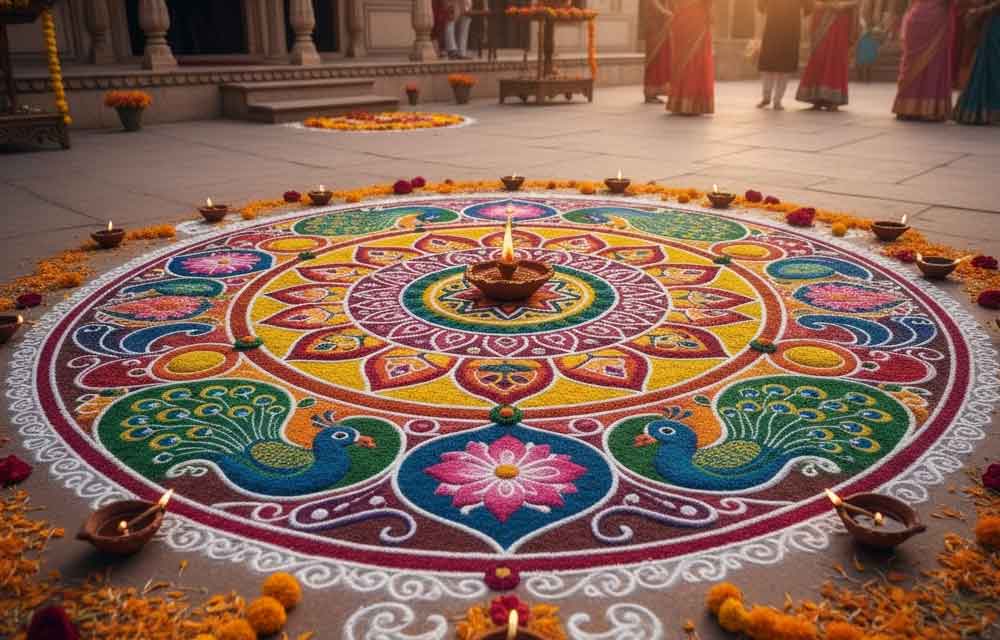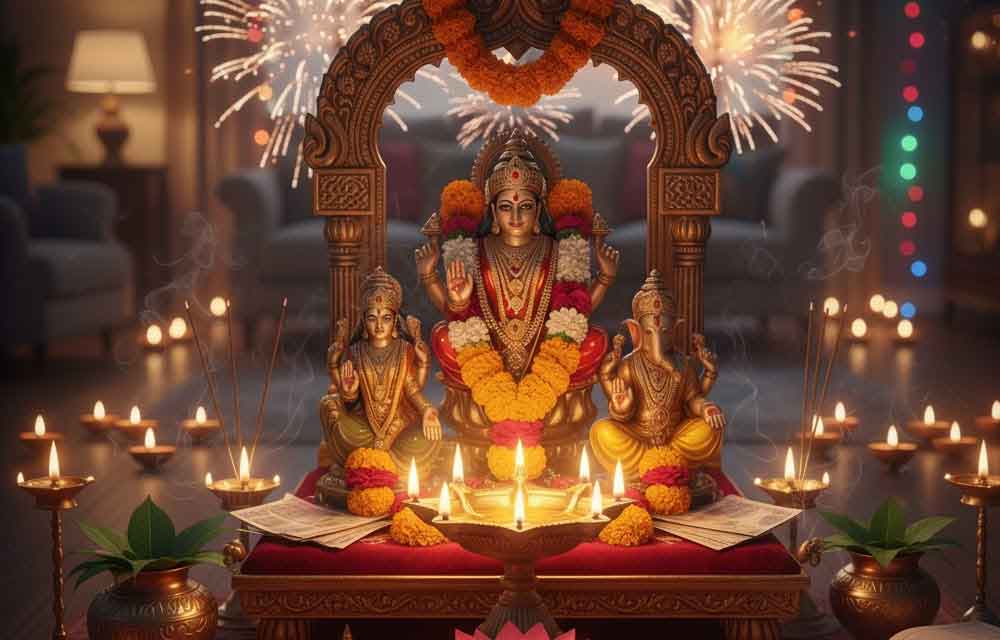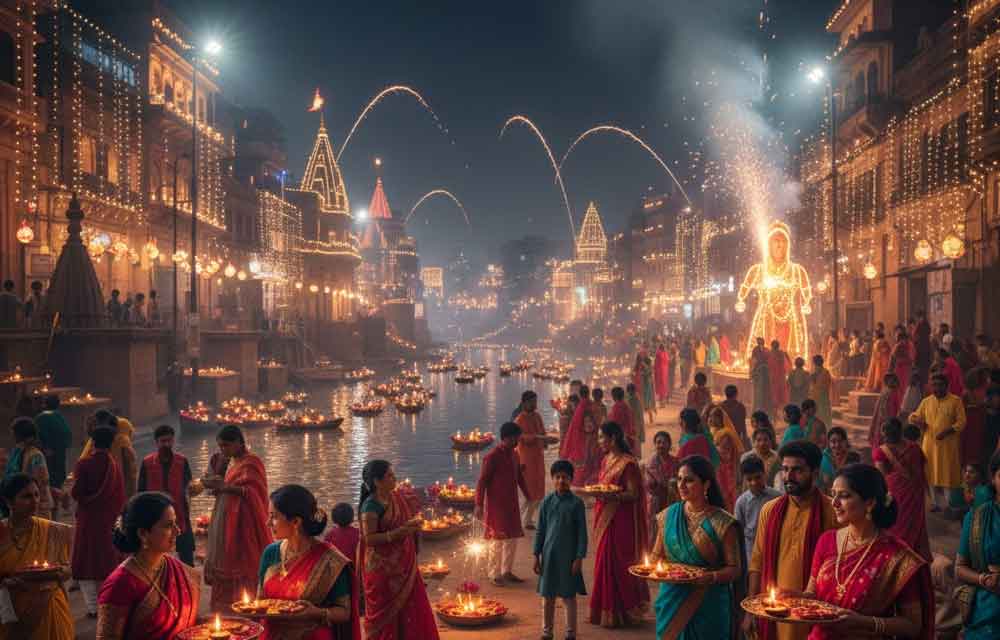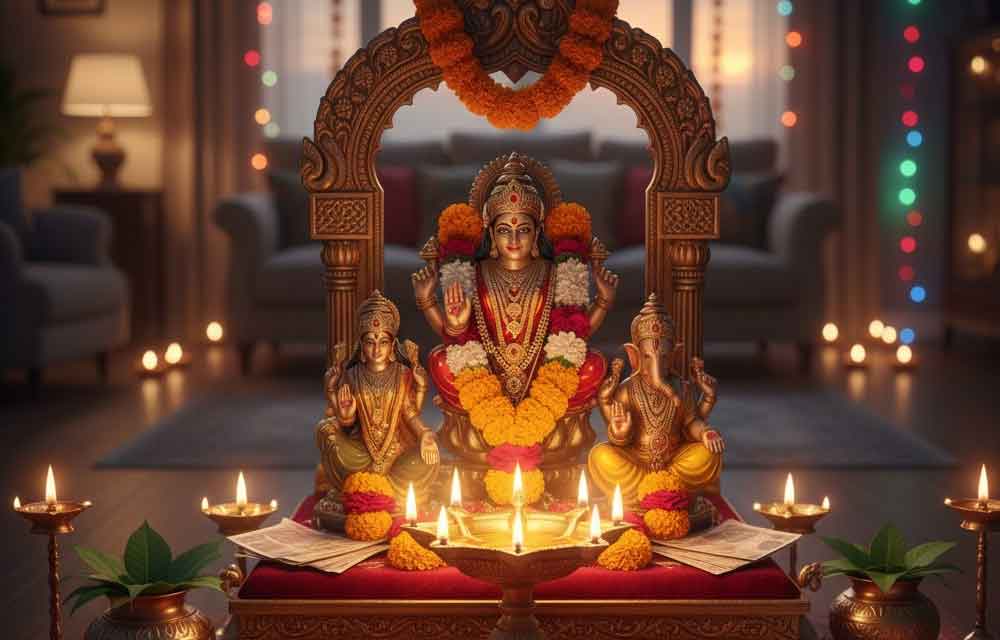Complete Diwali Puja Guide: Lakshmi Puja Vidhi, Mantras & Spiritual Significance
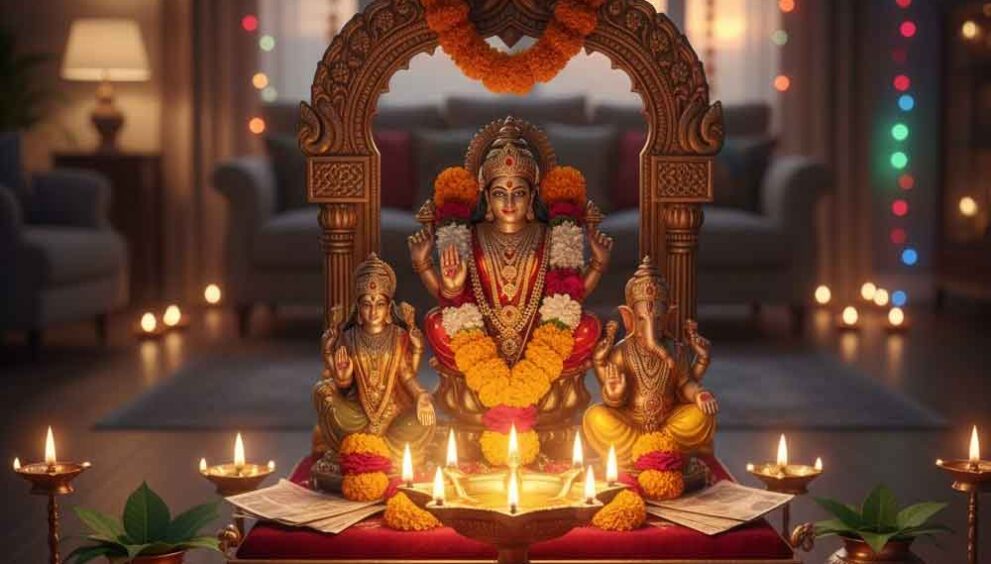
Diwali, the festival of lights, reaches its spiritual peak with Lakshmi Puja—a sacred ritual that invites prosperity, abundance, and divine blessings into our homes. This comprehensive guide reveals the authentic Lakshmi Puja vidhi, powerful mantras, and the profound spiritual meaning behind each ritual.
When to Perform Lakshmi Puja on Diwali
Lakshmi Puja is performed on Amavasya (new moon night) during the month of Kartik, typically in October or November. The most auspicious time is during Pradosh Kaal (after sunset) when Sthir Lagna prevails. In 2024, consult your local panchang for the exact muhurat in your region.
Essential Puja Items (Samagri List)
Before beginning the ritual, gather these essential items:
For the Altar
- Idol or picture of Goddess Lakshmi and Lord Ganesha
- Clean red or yellow cloth
- Wooden chowki (platform)
- Kalash (copper or silver pot)
- Fresh mango leaves
- Coconut
Puja Materials
- Incense sticks (agarbatti)
- Camphor (kapoor)
- Ghee lamp or oil diyas
- Fresh flowers (marigold, lotus, rose)
- Kumkum and turmeric powder
- Sandalwood paste
- Rice grains (akshat)
- Betel leaves and nuts
- Sacred thread (mauli)
Offerings (Bhog)
- Sweets (especially kheer, ladoo, or barfi)
- Dry fruits and nuts
- Seasonal fruits
- Panchamrit (milk, curd, honey, sugar, ghee)
Additional Items
- New coins or currency notes
- Account books for business worship
- Lotus seeds (makhana)
- Cotton wicks
- Match box
Diwali Puja Steps: Complete Lakshmi Puja Vidhi
Step 1: Purification and Preparation (Shuddhi)
Begin by thoroughly cleaning your home, especially the puja area. Take a bath and wear fresh, clean clothes—preferably traditional attire in auspicious colors like red, yellow, or white.
Spiritual Significance: Cleanliness represents the purification of mind and space, creating a sacred environment for the divine presence.
Step 2: Kalash Sthapana (Establishing the Sacred Pot)
- Fill the kalash with water
- Place mango leaves around the rim
- Place a coconut on top
- Draw a swastika or lotus on the kalash with kumkum
- Position it on the right side of your altar
Spiritual Meaning: The kalash represents the universe—the water symbolizes life-giving energy, leaves represent nature, and the coconut represents divine consciousness.
Step 3: Ganesh Puja (Removing Obstacles)
Always begin with Lord Ganesha to remove obstacles:
Ganesh Mantra:
ॐ गं गणपतये नमः
Om Gam Ganapataye Namah
Chant this mantra 11 or 21 times while offering flowers, durva grass, and modak.
Step 4: Lakshmi Sthapana (Installing Goddess Lakshmi)
- Place the Lakshmi idol or picture on a clean red cloth
- Sprinkle holy water (gangajal) around the altar
- Light the ghee lamp or diyas
- Arrange flowers around the deity
Step 5: Panchamrit Abhishekam (Sacred Bath)
Gently bathe the deity’s feet with panchamrit while chanting:
Abhishekam Mantra:
ॐ श्रीं ह्रीं श्रीं कमले कमलालये प्रसीद प्रसीद
Om Shreem Hreem Shreem Kamale Kamalalaye Praseed Praseed
Then clean with pure water and wipe with a fresh cloth.
Step 6: Alankaran (Decoration)
- Apply kumkum, turmeric, and sandalwood paste
- Offer fresh flowers (especially lotus and marigold)
- Drape a new cloth if using an idol
- Offer jewelry or ornaments
Spiritual Significance: Adorning the deity represents honoring the divine feminine energy and cultivating devotion through aesthetic worship.
Step 7: Shodashopachara (16 Sacred Offerings)
Perform the traditional 16-step worship:
- Dhyana (Meditation)
- Avahana (Invocation)
- Asana (Offering seat)
- Padya (Washing feet)
- Arghya (Offering water)
- Achamana (Offering water for sipping)
- Snana (Bathing)
- Vastra (Offering clothes)
- Abharana (Offering ornaments)
- Gandha (Applying sandalwood paste)
- Pushpa (Offering flowers)
- Dhupa (Incense)
- Deepa (Lamp)
- Naivedya (Food offering)
- Tambula (Betel leaves)
- Aarti (Light offering)
Step 8: Mantra Japa (Sacred Chanting)
Chant the following powerful Lakshmi mantras:
Lakshmi Beej Mantra
ॐ श्रीं श्रीं श्रीं श्रीं श्रीं
Om Shreem Shreem Shreem Shreem Shreem
Chant 108 times for prosperity.
Mahalakshmi Mantra
ॐ महालक्ष्म्यै च विद्महे विष्णुप्रिययै च धीमहि तन्नो लक्ष्मीः प्रचोदयात्
Om Mahalakshmyai Cha Vidmahe Vishnupriyayai Cha Dhimahi Tanno Lakshmi Prachodayat
Lakshmi Gayatri Mantra
ॐ श्री महालक्ष्म्यै च विद्महे विष्णु पत्न्यै च धीमहि तन्नो लक्ष्मीः प्रचोदयात्
Om Shri Mahalakshmyai Cha Vidmahe Vishnu Patnyai Cha Dhimahi Tanno Lakshmi Prachodayat
Lakshmi Ashtottara (108 Names)
If time permits, recite the 108 names of Lakshmi for maximum blessings.
Step 9: Naivedya (Food Offering)
Offer the prepared bhog with this mantra:
ॐ प्राणाय स्वाहा, अपानाय स्वाहा, व्यानाय स्वाहा, उदानाय स्वाहा, समानाय स्वाहा, ब्रह्मणे स्वाहा
Om Pranaya Swaha, Apanaya Swaha, Vyanaya Swaha, Udanaya Swaha, Samanaya Swaha, Brahmane Swaha
Include kheer (sweet rice pudding), which is especially dear to Goddess Lakshmi.
Step 10: Lakshmi Aarti
Perform the aarti with a ghee lamp, moving it in circular motions:
Lakshmi Aarti (First verse):
ॐ जय लक्ष्मी माता, मैया जय लक्ष्मी माता
तुमको निसदिन सेवत, हर विष्णु विधाता॥
Om Jai Lakshmi Mata, Maiya Jai Lakshmi Mata
Tumko Nisadin Sevat, Har Vishnu Vidhata
Ring the bell continuously during aarti.
Step 11: Dhanya Lakshmi Puja (Worshipping Wealth)
Place your account books, jewelry, and money before the deity and pray for prosperity in the coming year. Offer flowers and rice while chanting:
ॐ श्रीं ह्रीं क्लीं महालक्ष्म्यै नमः
Om Shreem Hreem Kleem Mahalakshmyai Namah
Spiritual Significance: This ritual acknowledges wealth as a divine gift and seeks blessings for ethical prosperity.
Step 12: Pushpanjali (Flower Offering)
Offer flowers with both hands while reciting:
या देवी सर्वभूतेषु लक्ष्मी रूपेण संस्थिता
नमस्तस्यै नमस्तस्यै नमस्तस्यै नमो नमः
Ya Devi Sarvabhuteshu Lakshmi Rupena Samsthita
Namastasyai Namastasyai Namastasyai Namo Namah
Step 13: Pradakshina (Circumambulation)
Walk around the deity clockwise 3, 7, or 11 times with folded hands.
Step 14: Prarthana (Prayer)
Conclude with a heartfelt prayer:
सर्व मंगल मांगल्ये शिवे सर्वार्थ साधिके
शरण्ये त्र्यम्बके गौरी नारायणि नमोऽस्तु ते॥
Sarva Mangal Mangalye Shive Sarvartha Sadhike
Sharanye Tryambake Gauri Narayani Namostute
Step 15: Prasad Distribution
Distribute the blessed offerings among family members and neighbors.
Deep Spiritual Meaning Behind Diwali Rituals
The Philosophy of Light Over Darkness
Diwali’s illumination represents the victory of consciousness over ignorance. Each diya symbolizes:
- Wisdom dispelling the darkness of ignorance
- Goodness triumphing over evil
- Hope conquering despair
- Knowledge illuminating understanding
Why We Worship Lakshmi on Diwali
According to Hindu mythology, Goddess Lakshmi emerged during the churning of the cosmic ocean (Samudra Manthan) on Kartik Amavasya. This day marks her birth, making it the most auspicious time to invite her blessings.
Deeper Symbolism: Lakshmi represents not just material wealth but eight forms of prosperity:
- Adi Lakshmi – Primordial abundance
- Dhana Lakshmi – Monetary wealth
- Dhanya Lakshmi – Agricultural prosperity
- Gaja Lakshmi – Royal power
- Santana Lakshmi – Progeny and family
- Veera Lakshmi – Courage and strength
- Vijaya Lakshmi – Victory and success
- Vidya Lakshmi – Knowledge and wisdom
The Significance of Cleanliness
The pre-Diwali cleaning ritual (traditionally done during Dhanteras) is a spiritual practice symbolizing:
- Removing negative energies from our space
- Clearing mental clutter and old patterns
- Creating space for new blessings
- Practicing discipline and order
Why We Light Diyas
The clay diya represents our physical body, ghee/oil represents our karmas, and the flame represents our soul. Lighting diyas symbolizes:
- Awakening inner divine consciousness
- Sharing light (knowledge) with the world
- Remembering our eternal spiritual nature
- Guiding departed ancestors back home
Rangoli and Its Sacred Geometry
The colorful rangoli designs at entrances serve as:
- Sacred mandalas inviting positive energy
- Symbols of welcome for Lakshmi
- Representations of cosmic patterns
- Expressions of creativity and devotion
Common Questions About Lakshmi Puja
Can we perform Lakshmi Puja without a priest?
Yes, absolutely. Lakshmi Puja can be performed by any family member with devotion and sincerity. The divine responds to pure intention.
What if I don’t have all the puja items?
Use what you have. Even offering water and flowers with genuine devotion is acceptable. God values bhakti (devotion) over elaborate rituals.
Which direction should the puja altar face?
Ideally, face East or North during worship. Place the altar in the Northeast corner of your home.
Can women perform puja during menstruation?
Traditional views vary, but many modern interpretations hold that the divine mother welcomes all her children regardless of bodily conditions. Follow your family tradition and personal belief.
How long should the puja take?
A complete puja takes 45 minutes to 2 hours. However, even a brief, sincere worship is powerful.
After the Puja: Sustaining Lakshmi’s Blessings
Lakshmi’s presence remains when we maintain:
- Cleanliness and Order: Keep your home clean and organized
- Generosity: Share your abundance with others
- Gratitude: Regularly thank the divine for your blessings
- Ethical Conduct: Earn and spend wealth righteously
- Devotion: Continue regular prayers and spiritual practice
- Service: Use your resources to help those in need
Conclusion: The True Wealth of Diwali
Diwali’s Lakshmi Puja is more than a ritual seeking material prosperity—it’s a profound spiritual practice that aligns us with abundance consciousness, gratitude, and divine grace. When performed with understanding and devotion, it transforms not just our external circumstances but our inner being.
As you light those diyas this Diwali, remember that the greatest wealth is spiritual wisdom, and the brightest light shines from within. May Goddess Lakshmi bless you with all eight forms of prosperity, and may your life illuminate the world around you.
Wishing you a blessed and prosperous Diwali!
For more authentic Hindu spiritual practices, rituals, and wisdom, visit HinduTone.com
Share Your Experience
Have you performed Lakshmi Puja? Share your experiences and family traditions in the comments below. Your story might inspire others on their spiritual journey!

 English
English 